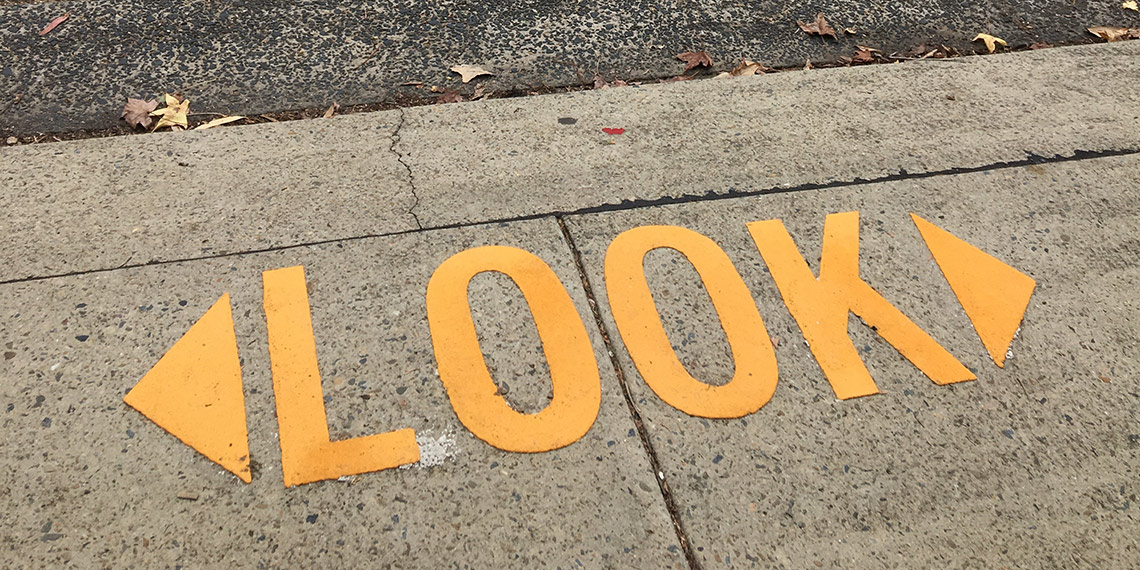Pedestrian safety

Ku-ring-gai Council’s Pedestrian Safety campaign supports the NSW Governments vision of ‘Towards Zero’ - zero deaths and serious injuries on NSW roads.
Pavement <LOOK> stencils, social media, banners and senior talks are used to remind pedestrians to make safe decisions when crossing the road.
Pavement <LOOK> stencils are located in high pedestrian activity areas, such as pedestrian crossings, train stations, schools, shopping areas etc, and aim to prompt residents and visitors to think about their actions when crossing the road and to not be distracted.
Safety tips for pedestrians walking at night
- Wear reflective clothing or bring a torch.
- Don’t assume that a driver has seen you.
- Cross at pedestrian crossings or pedestrian refuges where available.
- Use footpaths or nature strips where possible.
- If you have to walk on a road without a footpath or nature strip, stay as far to the side of the road as possible, facing oncoming traffic.
- Avoid walking in poorly-lit areas.
- Avoid distractions; put away phones, devices, and remove headphones.
- Always look out before you step out.
Safety tips for pedestrians
- Avoid using mobile phones or music players.
- Cross at marked crossings or traffic lights.
- If you have to walk or run on the road, do so in the direction of oncoming traffic so you are more visible.
- At traffic lights cross only when the pedestrian signal is green. Do not start to cross when the red light flashes.
- Before you cross a road, think about whether a driver can see you.
- Never assume a vehicle will stop for you.
- Avoid crossing between parked cars or in front of buses.
- Children eight years and under should hold an adult's hand at all times.
- Children ten years and under should hold an adult's hand when crossing the road.
- Wear bright or light-coloured clothing at night or in reduced visibility conditions.
Safety tips for drivers
- You must give way to pedestrians crossing the road if you are in danger of colliding with them, even if there is no marked pedestrian crossing.
- Slow down on roads where there are likely to be pedestrians.
- Never assume a pedestrian has seen you and will wait for you to go past.
- Older pedestrians may need longer to cross.
- Children are difficult to see and may act unpredictably.